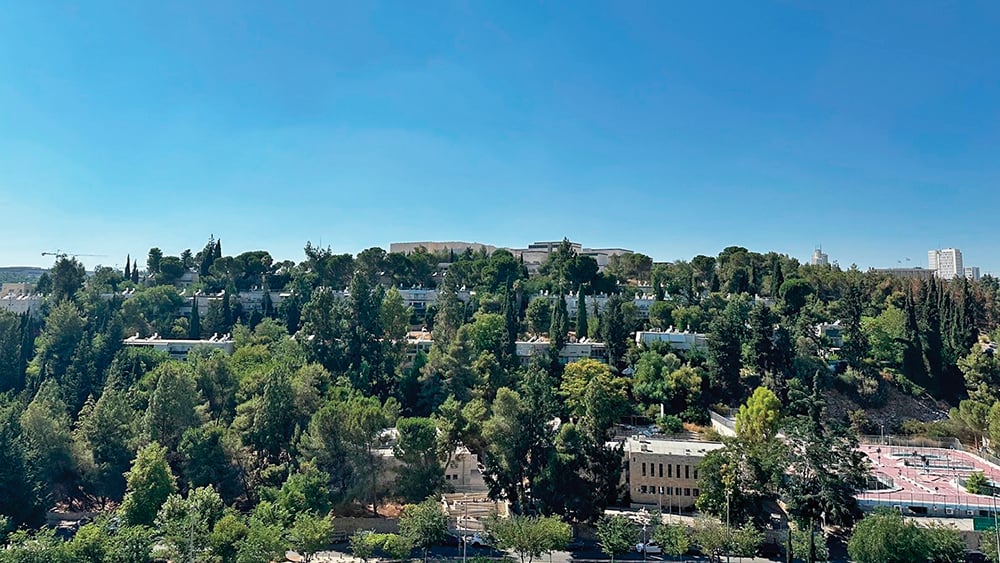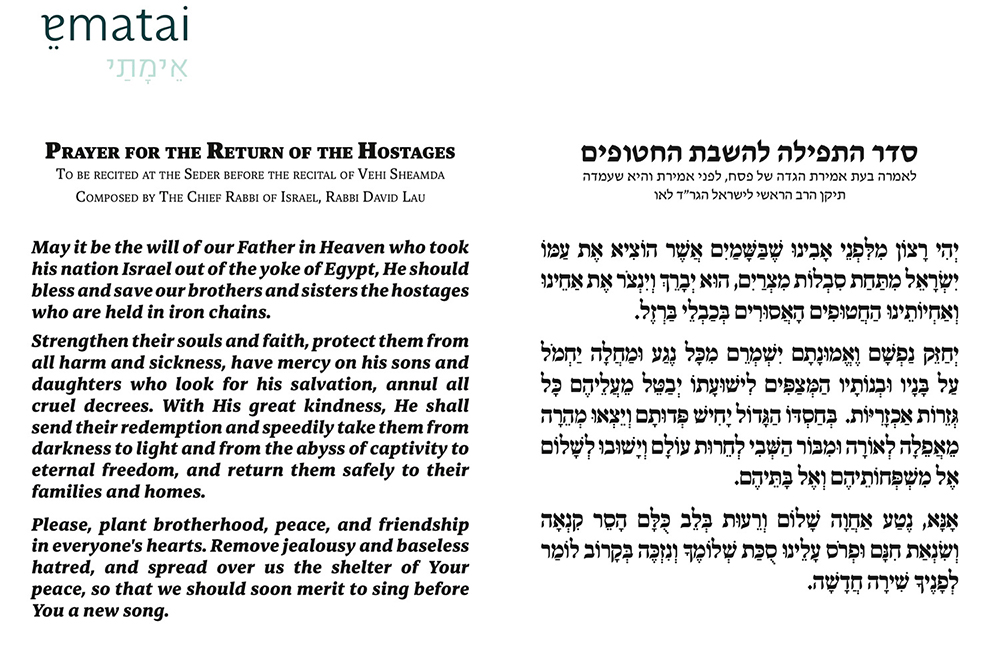



In Yevamot 54b we encounter a statement by either R. Yona or Rav Huna, son of Rav Yehoshua. This week I won’t discuss content, or how rabbinic biography can shed light on said content, because reasons. Instead, my focus is upon the more boring fact that there is an alternate attribution.
The formula is Amar X ve’iteima Y. The word אִיתֵּימָא, a contraction of אִית אֵימָא, means “some say.” Who is saying the alternative, and when? We might imagine several possibilities. (a) Perhaps the statement was reported amongst the Amoraim in various people’s names, because each of them actually stated it. We don’t want to omit credit. Indeed, we sometimes see the position separately enunciated by different Sages, e.g., Rav Yehuda and Shmuel that יֵשׁ זִיקָא, or a joint statement that Abaye and Rava both say Rabbi Shimon admits by פְּסִיק רֵישָׁא. (b) Perhaps there was uncertainty in attribution even among Amoraim, and the original encoder of the sugya recorded both. (c) Perhaps an error crept into the oral transmission, and the Reciter (garsan) then mentioned both possibilities he’d heard. (d) Perhaps an error crept into the written transmission, and a scribe (sofer) meticulously recorded both from variant texts available to him.
Transmission of Oral Law, תּוֹרָה שֶׁבְּעַל פֶּה, including sugyot of Gemara, was primarily performed orally throughout the Talmudic era , extending through the Savoraic and even the Geonic era. Writing it down violated a Biblical prohibition—see Temurah 14b for interpretive derivations of this law—but eventually it was written down so that the Torah would not be lost. Dr. Elman writes that “evidence for written texts of the Babylonian Talmud points to the mid-eighth century as the beginning of our written tradition… But even after such texts began to appear, oral transmission was clearly privileged.” He analyzes different formulations of alternatives: אִיתֵּימָא, וְאָמְרִי לַהּ, and אִיכָּא דְאָמְרִי.
For אִיתֵּימָא, Elman maintains an oral provenance, writing: “The variant attributions can often be understood as possibilities arising from the vagaries of association, where the Amoraic statement is attributed to contemporaries who are closely associated, as in the case of R. Yohanan and his close disciple, R. Abbahu (Pes 100a), or when the two names can easily be aurally confused, as in the case of R. Abin and R. Abina (Ber 7a) or R. Ahali and R. Yehiel (Erub 12a), or when one element of a name is common to both, as in the case of R. Yose b. Abin and R. Yose b. Zevida (Ber 13a) or R. Levi b. Hamma and R. Hamma b. Hanina (Suk 47a). These alternatives are such as might have occurred either in the process of oral transmission, or there is reason to believe that one authority had actually quoted the other.”
To attempt to clarify, errors can creep into a transmission, but different noisy channels will lead to different errors. For instance, when I type with a qwerty keyboard, a likely error would be hitting the “a” key instead of the proximate “s” key. As a scribe, I might mistake the ה in Rav Huna for a ר in an unclear text and write Rav Runa. When repeating something I heard, I might aurally mistake Rav ‘Una for Rav Huna. When repeating something from memory, I might fuzzily remember part of the name and fill out the rest incorrectly, e.g., Rav Huna becomes Rav Huna son of Rav Yehoshua, or substitute a teacher for a student, e.g., Rav Yosef instead of Abaye. Other errors include dittography (repeating a passage) and haplography (omitting a passage) where there seems to be repetition of part of the text. Similarly, if there is a run of statements by Rav Yosef, and later a statement by Rav Ashi, an uncertain intervening statement might be attributed to either Rav Yosef or Rav Ashi.
I am not entirely convinced by Elman’s example, since some errors can arise in different modes of transmission and could be attributable to textual errors. Let’s consider each example. While his point about scholastic associations is certainly valid, Pesachim 100a, with וְהָאָמַר רַבִּי יִרְמְיָה אָמַר רַבִּי יוֹחָנָן, וְאִיתֵּימָא אָמַר רַבִּי אֲבָהוּ אָמַר רַבִּי יוֹסֵי בַּר רַבִּי חֲנִינָא, isn’t the best selection. The word וְאִיתֵּימָא is Tosafot’s suggestion because a text of Rabbi Yochanan citing his student Rabbi Abbahu doesn’t make sense. Manuscripts have several variants, including spelling אבהו as אבוה and רבבהו, and writing Rabbi Yirmiyah bar Abba instead of Rabbi Yirmiyah. See e.g. Vatican 109b, which has the shorter והא אמ’ ר’ ירמיה בר אבא אמ’ ר’ יוסי בר’ חנינא.
Vatican 109b manuscript, Pesachim 100a
The opening ירמ of Yirmiyah is orthographically similar to יוח of Yochanan (see image), introducing Yochanan into the attribution. “Bar Abba” at line-end can be expanded into Abbahu. Then, via Tosafot’s logic, insert וְאִיתֵּימָא .
Brachot 7a, with R’ Avin vs. R’ Avina, might be textual, losing an aleph , though aural error sounds more plausible. Eruvin 12a, with Rav Achlai (אחלאי) might involve letter transposition to the more common name Yechiel. For Brachot 13a, see the Firenze manuscript, מתיב רב יוסף בר (יעקב) אבין ואית’ ר’ יוסי בר זביד׳. The spurious, crossed-out Yaakov is dittography from the preceding statement. Zevida is spelled Zvid̍, with apostrophe over the daled indicating aleph. That final daled could appear, orthographically, like nun sofit. A scribe might reinterpret Zevid̍ as Avin . For Sukkah 47a, Rav Levi bar Chama is properly Rav Levi bar Lachma, and he cites Rav Chamma bar Chanina in Zevachim 53a and Rosh Hashanah 29b. We should follow Munich 140 of Sukkah, lacking וְאִיתֵּימָא, so it’s again citation .
Firenze manuscript, Brachot 13a
Munich 140 manuscript, Sukkah 47a
Turning to our sugya (Yevamot 54b), is the R’ Yona vs. Rav Huna son of Rav Yehoshua variation due to problems of memory, sound or writing? The only R. Yona we know is Rabbi Yona, a fourth-generation Amora from Teveriah, who doesn’t fit well, chronologically or geographically, with the seventh-generation Babylonian Amora, Rav Acha of Difti, who precedes in our sugya . Still, the citation also appears in Keritot 2b and Kiddushin 67b, juxtaposed to other Amoraim. The Talmudic Narrator is creating these juxtapositions, so chronological/geographical fit isn’t important. In Yevamot and Kiddushin, it is “elah amar X,” which is a juxtaposition. In Keritot, it is rather a response to Rav Bibi son of Abaye (fifth-generation Babylonian Amora, Pumpedita), so this seems that Rav Huna son of Rabbi Yehoshua (fifth-generation Babylonian Amora, Naresh, student of the aforementioned Abaye) is an extremely good fit .
Yona ends in ה while Huna ends in א, suggesting aural error. But ונ is pronounced “un” or “on,” which sounds dissimilar, suggesting scribal error. Perhaps an apostrophe after ר could be misinterpreted as a yud starting the next word, producing Yona, or the yuds of a רבי יונה could be reinterpreted as a heh, producing Huna. However, I’d just point to the Munich 95 manuscript for Keritot 2b, which lacks Yona, presenting the alternatives of Rav *Huna* and Rav Huna son of Rav Yehoshua. I suspect this is the original. Rav Huna is most often the famous second-generation Amora of Sura. However, sometimes Rav Huna is shorthand for the fifth-generation Rav Yehoshua’s son, bar plugta of Rav Pappa, and it’s clear from context. (See Megillah 26b.) I’d guess that it was originally Rav Huna, referring to the later Amora, and a clarifying variant of “son of Rav Yehoshua” arose. Scribes didn’t comprehend “Rav Huna or Rav Huna,” and reconstructed “R. Yona.”
Munich 95 manuscript, Keritot 2b
Rabbi Dr. Joshua Waxman teaches computer science at Stern College for Women, and his research includes programmatically finding scholars and scholastic relationships in the Babylonian Talmud.
1 This doesn’t necessarily preclude occasional short notes, letters containing halachic inquiries and answers, or lists. See Mar bar Ravna’s list of 16 prohibited women (Yevamot 21b), a “book of aggadot” (Sanhedrin 57b, Temurah 14b) and the written letter (Temurah 14b) about a written letter. These are exceptions.
2 See Dr. Yaakov Elman, Orality and the Redaction of Babylonian Talmud. https://journal.oraltradition.org/wp-content/uploads/files/articles/14i/6_elman.pdf
3 ה”ג והאמר ר’ ירמיה א”ר יוחנן ואיתימא רבי אבהו א”ר יוסי בר ר’ חנינא – ולא גרס רבי יוחנן א”ר אבהו דרבי אבהו תלמידיה דר’ יוחנן הוה:
4 Anyway, it isn’t Rabbi Yochanan vs. Rabbi Abbahu, but X citing Rabbi Yochanan, and Rabbi Abahu citing Y. There’s also oral/orthographic similarity of Yochanan/Chanina.
5. For instance, if Avina were written with a diacritic, Avin̍. See Zevida below.
6 However, see Yevamot 45b, where oral transmission error of Avin/Zevida is explicit: אָמַר רַב שֵׁשֶׁת: לְדִידִי אָמַר לִי רַב גַּזָּא: לָא רַבִּי יוֹסֵי בַּר אָבִין הֲוָה אֶלָּא רַבִּי יוֹסֵי בְּרַבִּי זְבִידָא הֲוָה, וְאַכְשַׁר בֵּין בִּפְנוּיָה בֵּין בְּאֵשֶׁת אִישׁ.
7 Elman might hint to this when he wrote “or there is reason to believe that one authority had actually quoted the other.”
8 On Yevamot 8a, Rav Achi of Difti and Ravina II appear afterward, which works better.
9 Though note that no manuscript spells out the ר as either רב or רבי, so perhaps there’s an otherwise unknown Rav Yona.












